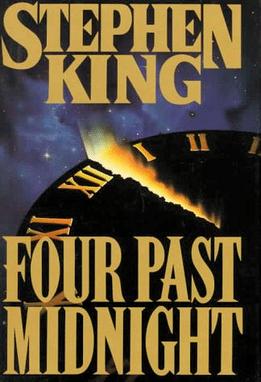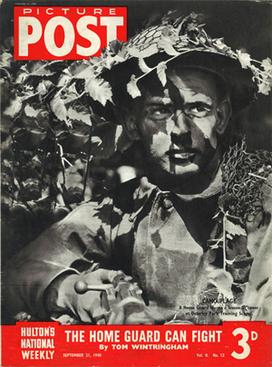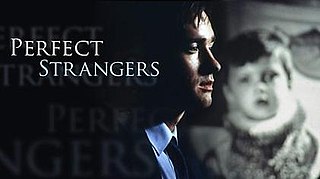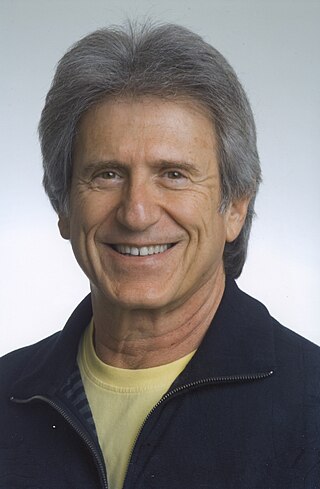
Four Past Midnight is a collection of novellas written by Stephen King in 1988 and 1989 and published in August 1990. It is his second book of this type, the first one being Different Seasons. The collection won the Bram Stoker Award in 1990 for Best Collection and was nominated for a Locus Award in 1991. In the introduction, King says that, while a collection of four novellas like Different Seasons, this book is more strictly horror with elements of the supernatural.
Getty Images Holdings, Inc. is an American visual media company and supplier of stock images, editorial photography, video, and music for business and consumers, with a library of over 477 million assets. It targets three markets—creative professionals, the media, and corporate.

Stephen Poliakoff is a British playwright, director and screenwriter. In 2006 Gerard Gilbert of The Independent described him as the UK's "pre-eminent TV dramatist" who had "inherited Dennis Potter's crown".

Frank Romer Pierson was an American screenwriter and film director.

Stock photography is the supply of photographs that are often licensed for specific uses. The stock photo industry, which began to gain hold in the 1920s, has established models including traditional macrostock photography, midstock photography, and microstock photography. Conventional stock agencies charge from several hundred to several thousand US dollars per image, while microstock photography may sell for around US$0.25 cents. Professional stock photographers traditionally place their images with one or more stock agencies on a contractual basis, while stock agencies may accept the high-quality photos of amateur photographers through online submission.

Picture Post was a photojournalistic magazine published in the United Kingdom from 1938 to 1957. It is considered a pioneering example of photojournalism and was an immediate success, selling 1,700,000 copies a week after only two months. It has been called the UK's equivalent of Life magazine.

Jean-Baptiste Gustave Le Gray was a French painter, draughtsman, sculptor, print-maker, and photographer. He has been called "the most important French photographer of the nineteenth century" because of his technical innovations, his instruction of other noted photographers, and "the extraordinary imagination he brought to picture making." He was an important contributor to the development of the wax paper negative.

Albert William Thomas Hardy was an English documentary and press photographer known for his work published in the Picture Post magazine between 1941 and 1957.

Perfect Strangers is a television drama first aired in 2001, produced for BBC Two. It was written and directed by Stephen Poliakoff, and starred Michael Gambon, who won a British Academy Television Award for his performance, Lindsay Duncan, Matthew Macfadyen, Claire Skinner, and Toby Stephens. Anton Lesser and Timothy Spall also appear. The drama received two Royal Television Society Awards and a Peabody Award. It was also nominated for the BAFTA TV Award for Best Drama Serial.

Timothy Leonard Spall is an English actor and presenter. Spall gained recognition for his character actor roles on stage and screen. He is known for his collaborations with director Mike Leigh, acting in six of his films: Home Sweet Home (1982), Life is Sweet (1990), Secrets & Lies (1996), Topsy-Turvy (1999), All or Nothing (2002), and Mr. Turner (2014). He was nominated for the BAFTA for Best Actor in a Leading Role for his role in Secrets and Lies, and received the Cannes Film Festival Best Actor Award for his portrayal of J. M. W. Turner in Mr. Turner. In 2000, he was appointed Officer of the Order of the British Empire (OBE) by Queen Elizabeth II.

David Hume Kennerly is an American photographer. He won the 1972 Pulitzer Prize for Feature Photography for his portfolio of photographs of the Vietnam War, Cambodia, East Pakistani refugees near Calcutta, and the Ali-Frazier fight in Madison Square Garden. He has photographed every American president since Lyndon B Johnson. He is the first presidential scholar at the University of Arizona.
Charles Clyde Ebbets was an American photographer credited with taking the iconic photograph Lunch atop a Skyscraper (1932).
Lawrence Julian Schiller is an American photojournalist, film producer, director and screenwriter.
EMPICS, a PA Media company, is a UK firm which deals with licensing photographs of people and events for the press and other mass news media.

Cecil William Stoughton was an American photographer. He is best known for being President John F. Kennedy's photographer during his White House years.
Sir Edward George Warris Hulton was a British magazine publisher and writer.

Michael Ochs is an American photographic archivist best known for his extensive collection of pictures related to rock music dating back to the 1950s and 1960s. The Michael Ochs Archives, located in Venice, California, contained 3 million vintage prints, proof sheets and negatives which were licensed daily for use in CD reissues, books, films and documentaries.

The Wisconsin Center for Film and Theater Research (WCFTR) is a major archive of motion picture, television, radio, and theater research materials. Located in the headquarters building of the Wisconsin Historical Society in Madison, Wisconsin, the WCFTR holds over three hundred collections from motion picture, television, and theater writers, producers, actors, designers, directors, and production companies. These collections include business records, personal papers, scripts, photographs, promotional graphics, and some twenty thousand films and videotapes of motion picture and television productions.

Ed Feingersh (1925–1961) studied photography under Alexey Brodovitch at the New School of Social Research. He later worked as a photojournalist for the Pix Publishing agency. His talent for available light photography under seemingly impossible conditions was well recognised. His pictures of Marilyn Monroe are his best known, but he was a prolific photojournalist throughout the 1950s. Two of his moody photographs of jazz performers were selected by Edward Steichen for MoMA’s world-touring The Family of Man exhibition.
Godfrey Thurston Hopkins (16 April 1913 – 27 October 2014), known as Thurston Hopkins, was a well-known British Picture Post photojournalist and a centenarian.














